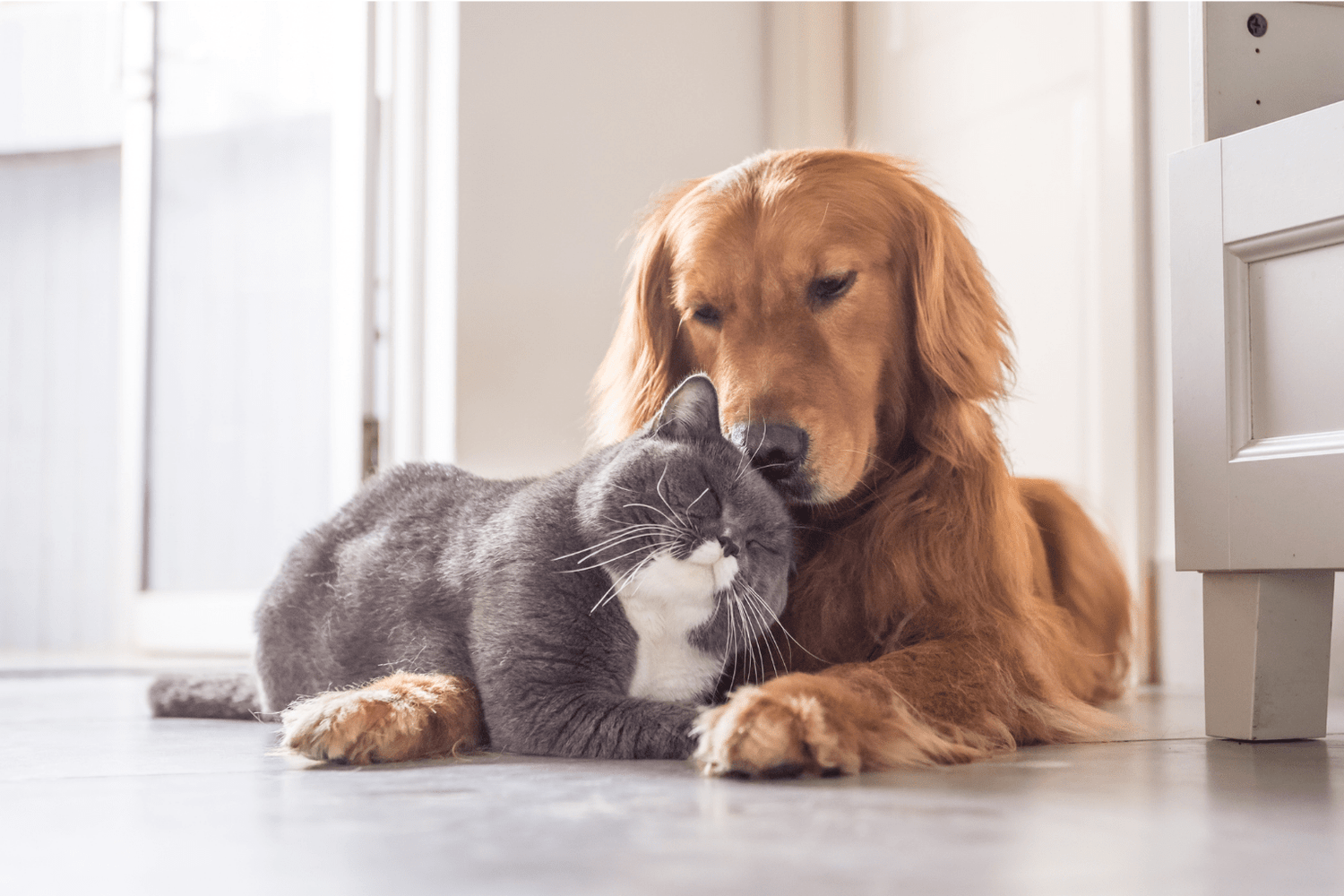Key Takeaways
- Moving a pet involves more than physical transportation; it requires emotional consideration.
- Pets experience stress from leaving familiar environments, scents, and routines behind.
- Thoughtful preparation is essential to help pets adjust to relocation smoothly.
- Understanding the emotional impact of moving can reduce stress for both pets and owners.
Table of Contents
- Moving a Pet: Real-World, Gentle Ways to Relocate Dogs and Cats with Less Stress
- Pre-Move Prep: Laying the Foundation for a Smooth Transition
- Travel Day Game Plan: How to Move Your Pet Safely by Car or Air
- When & Why to Choose Professional Pet Relocation Services
- Settling In: The First 72 Hours in a New Home
- Natural Homeopathic Remedies that Support Calming and Recovery During Moves
- Legal, ID, and Health Must-Do's: Paperwork & Protection on the Move
- Your Natural Moving Checklist: Key Steps at a Glance
- Moving Your Pet, Naturally, A Fresh Start for All
Moving a Pet: Real-World, Gentle Ways to Relocate Dogs and Cats with Less Stress
Moving a pet means more than just transporting your furry family member from point A to point B. It's about helping your dog or cat navigate one of life's biggest disruptions, leaving their familiar territory, scents, and routines behind. Unlike us, pets can't understand why their world suddenly changes, making moving a pet an emotionally charged experience that requires thoughtful preparation.
Over 60% of pets show visible stress signs during relocations, from hiding and loss of appetite to excessive vocalization and bathroom accidents. But here's what we've learned after helping thousands of pet parents through moves: natural preparation and gentle support make all the difference. When we honor our pets' need for security and use nature's calming remedies, we can transform a potentially traumatic experience into a manageable transition.
If your cat or dog is prone to anxiety, consider starting with a Dog Anxiety & Stress Relief Bundle or a Cat Anxiety & Stress Relief Bundle to help ease the transition and provide extra support during this stressful time.
Quick Answer: Is Moving Really Stressful for Pets?
Yes, research shows over 60% of dogs and cats display stress behaviors during moves. Common signs include loss of appetite, hiding, excessive panting or meowing, and house training accidents. The good news? With proper preparation and natural support, most pets adjust within 1-2 weeks.
Pre-Move Prep: Laying the Foundation for a Smooth Transition

The secret to successful moving pets starts weeks before the first box gets packed. Create a designated "safe haven" room where your pet's favorite bed, toys, and water bowl remain untouched until the very last day. This becomes their emotional anchor when everything else feels chaotic.
Carrier acclimation is non-negotiable. Start placing treats and meals inside the carrier two weeks prior, gradually increasing "door closed" sessions from two minutes to 30 minutes. Play classical music during these sessions, studies show it can lower pet heart rates by up to 15%.
For more tips on how to make the transition easier, check out these moving pets strategies from experienced pet parents.
| Stress-Buster Method | Effectiveness | Best For |
|---|---|---|
| Routine maintenance | High | All pets, especially cats |
| Safe haven room | High | Anxious or senior pets |
| Classical music | Moderate | Sound-sensitive animals |
| Natural calming pellets | High | Rescue pets, travel-phobic animals |
Travel Day Game Plan: How to Move Your Pet Safely by Car or Air
On moving day, keep pets in their safe room while movers work, or arrange temporary pet-sitting. Feed a light meal at least three hours before departure, never travel with a full stomach. For car travel, secure dogs with harnesses or seatbelt tethers, and offer water breaks every two hours.
Air travel requires extra precision. Pets under 15 pounds can fly in-cabin; larger animals must travel cargo. Your carrier must allow your pet to stand, turn around, and lie down comfortably. Label everything clearly with your pet's name, your contact details, and bright "Live Animal" stickers.
If your pet is especially sensitive to travel, a Dog Pet Relax Anxiety & Calming Remedy or Cat Pet Relax Anxiety & Stress Relief Remedy can help keep them calm and comfortable on the road or in the air.
Essential Travel Kit Checklist
- Natural calming pellets (start 2-3 days before travel)
- Collapsible water bowl
- Recent photo of your pet
- Vaccination records copy
- Familiar blanket or toy
Expert Insight: Most veterinarians no longer recommend sedation for travel, as it can interfere with your pet's natural balance and breathing. Instead, consult a holistic vet about gentle, natural remedies that support calm without compromising safety.
When & Why to Choose Professional Pet Relocation Services
Professional pet relocation becomes essential for international moves, brachycephalic breeds (flat-faced dogs and cats), or families with multiple animals. These specialists coordinate complex paperwork, import permits, health certificates, and breed-specific airline restrictions, while providing door-to-door service with regular updates.
The investment pays off in reduced stress for both you and your pet. Professionals understand breed-specific needs and can navigate costly regulatory mistakes that could delay your pet's arrival by weeks.
For more information on official guidelines and best practices, see the ASPCA's advice on moving your pet.
| Criteria | DIY Move | Pet Relocation Service |
|---|---|---|
| Time investment | High | Low |
| Paperwork handling | DIY research | Handled by experts |
| Stress on pet | Variable | Minimized, tailored care |
| Best for | Short moves, simple routes | Long-haul, complex moves |
Settling In: The First 72 Hours in a New Home

The moment you arrive, resist the urge to let your pet explore freely. Instead, recreate their safe haven in one quiet room with familiar belongings. Keep doors closed for the first 24-48 hours, allowing supervised exploration in small increments. For cats, place the litter box, food, and water in this base room initially, then gradually move items to their permanent locations over several days.
Some hiding, accidents, or appetite loss is normal during the first 72 hours. Most pets begin eating regularly and showing curiosity within two days. However, moving a pet successfully means knowing when to seek help, if your pet refuses food for more than 48 hours, hides for over three days, or has persistent diarrhea, contact your veterinarian immediately.
Red Flag Warning Signs
Contact your vet if your pet: skips more than 2 consecutive meals, hides for 3+ days without emerging, has diarrhea lasting over 48 hours, or shows signs of dehydration (dry gums, lethargy).
Natural Homeopathic Remedies that Support Calming and Recovery During Moves
Natural calming pellets provide gentle support without the side effects of pharmaceutical sedatives. Begin administration 2-3 days before moving your pet, continuing twice daily through the first week post-move. These pellets dissolve easily in your pet's mouth or can be mixed into food, no wrestling with liquid droppers or messy applications.
Our community has shared countless success stories. Milo, a rescue cat who typically hid for weeks in new environments, emerged from hiding after just two days with pellet support. Charlie, a car-phobic Dachshund, actually napped during his first cross-country road trip. The gentle formulation works alongside your vet's recommendations and pairs safely with any prescribed medications.
For pets with behavioral challenges, the Dog Peaceful Paws Aggression & Noise Phobia Remedy or Cat Peaceful Paws Aggression & Behavioral Remedy can be especially helpful during this adjustment period.
Community Insight: "These pellets were a game-changer for our anxious Border Collie mix during our military relocation. No drowsiness, no weird behavior, just a calmer, more adaptable dog who handled the 14-hour drive like a champion." - Sarah M., Best Life 4 Pets community
This information is not a substitute for professional veterinary advice. Always consult your veterinarian before starting any new supplement regimen.
Legal, ID, and Health Must-Do's: Paperwork & Protection on the Move
Every successful pet move requires current health certificates issued within 10-30 days of travel (requirements vary by destination). Ensure rabies and core vaccines are up-to-date, and research your destination's specific requirements, some states require additional testing or quarantine periods.
Update identification immediately. Change your pet's collar tags and microchip registration to reflect your new address and phone number before departure. For international moves, factor in potential quarantine requirements and breed restrictions that could affect your timeline.
For official government requirements, refer to the CDC's guidelines on bringing pets into the United States.
Essential Documents Checklist
- Health certificate (destination-specific timing)
- Current vaccination records
- Updated microchip registration
- Two printed copies of all documents
- Digital photos stored on your phone
Your Natural Moving Checklist: Key Steps at a Glance

One Month Before: Schedule vet check, research destination requirements, begin carrier acclimation. One Week Before: Create safe haven room, start calming pellet routine, confirm travel arrangements. Day Before: Pack pet essentials separately, prepare travel kit, give light meal only.
Moving Day: Keep pets secure during loading, maintain feeding schedule, travel with comfort items. First Week: Establish base room, supervise exploration, continue calming support, monitor for stress signs.
For more seasonal safety tips, read our article on pet winter safety and how to keep your pet comfortable year-round.
Download Your Complete Moving Timeline
Get our detailed, printable checklist with specific timing for each step. Perfect for staying organized during the chaos of moving pets safely and naturally.
Moving Your Pet, Naturally, A Fresh Start for All
Every move represents a new chapter for your entire family, including your four-legged members. By choosing natural, gentle approaches that honor your pet's emotional needs, you're not just relocating, you're building resilience and trust that will serve you both for years to come.
If you're looking for a comprehensive approach, explore our Dog and Cat Supplement Bundles for all-around support during and after your move.
You might also enjoy our tips for taking care of your aging pets as they adjust to a new environment.
Frequently Asked Questions
What are the most effective ways to reduce stress for pets during a move?
The best ways to ease your pet’s stress include keeping familiar items close, maintaining their daily routines, and providing a secure, comfortable carrier. Using natural calming aids and allowing your pet time to adjust gradually can also make a big difference in helping them feel safe during the transition.
How can I prepare my pet ahead of time to help them adjust to relocation?
Start weeks before moving by setting up a safe space with your pet’s favorite bed and toys. Gradually introduce their carrier and practice short trips to build comfort. Keeping routines consistent and using gentle homeopathic remedies can support emotional balance as the big day approaches.
When should I consider using professional pet relocation services?
Professional pet relocation is a good choice if your move involves long distances, air travel, or if your pet has special needs that require extra care. These experts help ensure safe, stress-minimized transport and handle the logistics so you can focus on settling in with your pet.
What natural remedies or calming aids can support my pet during the moving process?
Homeopathic remedies designed to support calm and ease discomfort can be very helpful during moves. Bundles like our Dog Anxiety & Stress Relief or Cat Anxiety & Stress Relief provide gentle, sugar-pellet formulas that support your pet’s body in managing stress naturally throughout the transition.



